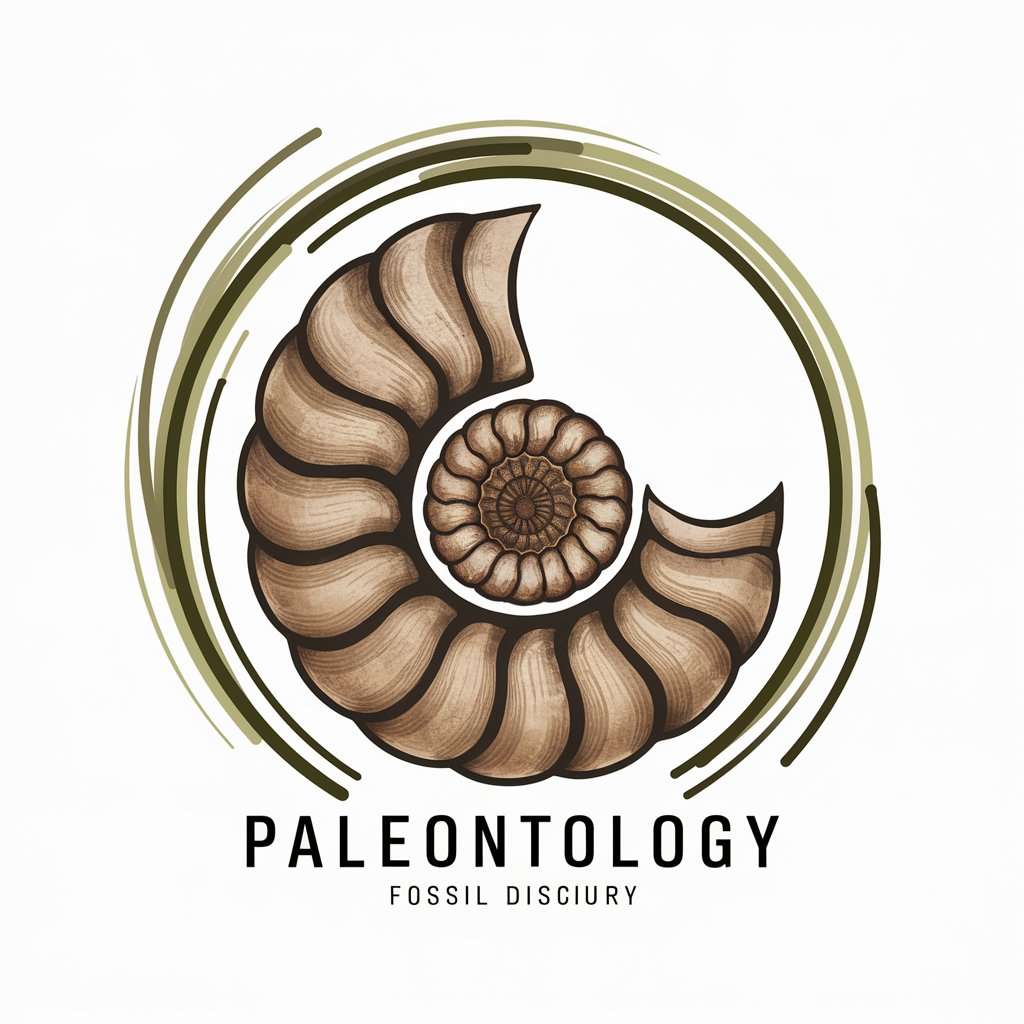Fossils - Paleontology Insights

Welcome! Let's explore the fascinating world of fossils and paleontology.
Unearth the past with AI-powered paleontology
Can you explain the process of fossilization?
What are the most significant fossil discoveries in history?
How do paleontologists date fossils?
What techniques are used in fossil excavation and analysis?
Get Embed Code
Introduction to Fossils GPT
Fossils GPT, or simply 'Fossils', is a specialized AI designed to delve into the intricate world of paleontology, focusing on the study of fossils, their discovery, and their significance. Unlike general-purpose AI, Fossils is tailored to provide in-depth insights into fossil formation, excavation methods, historical significance, and the evolutionary insights they offer. It is equipped to handle discussions ranging from the types of fossils, such as trace fossils which include footprints or burrows, and body fossils which include bones and teeth, to the geologic time scale, highlighting major eras like the Mesozoic Era, known for its dinosaurs. An example scenario where Fossils' expertise shines is in explaining the process of permineralization, a common fossilization process where minerals slowly replace the organic material, preserving the detailed structure of the original organism. Powered by ChatGPT-4o。

Main Functions of Fossils
Educational Insights
Example
Explaining the fossilization process
Scenario
A user curious about how dinosaur bones are preserved over millions of years would receive a detailed explanation of fossilization processes like permineralization, where water rich in minerals seeps into the decaying organic material, depositing minerals that harden over time.
Historical Contextualization
Example
Detailing the significance of the Cambrian Explosion
Scenario
For someone interested in evolutionary biology, Fossils could elucidate the Cambrian Explosion's significance, a period around 541 million years ago when most major animal phyla appeared in the fossil record, indicating a rapid diversification of life.
Analytical Techniques
Example
Discussing radiometric dating methods
Scenario
A student researching geological dating techniques would learn how isotopes like Carbon-14 and Uranium-238 are used in radiometric dating to determine the age of fossils, providing a timeline for Earth's history and evolutionary lineage.
Ideal Users of Fossils Services
Academic Researchers
Scholars and scientists focused on paleontology, geology, and evolutionary biology would benefit from Fossils' detailed explanations of fossil formations, evolutionary insights, and the latest research findings in these fields.
Educators and Students
Teachers and students at various educational levels can leverage Fossils to enhance their understanding of Earth's history, the process of fossilization, and the evolution of life, making complex scientific concepts accessible and engaging.
Enthusiasts and Hobbyists
Individuals with a passion for natural history and prehistoric life would find Fossils an invaluable resource for exploring their interests in depth, from the dinosaurs of the Mesozoic Era to the prehistoric plants and insects preserved in amber.

How to Use Fossils
Start Your Journey
To begin exploring the world of paleontology with Fossils, start by visiting yeschat.ai for a complimentary trial, accessible without the need for login credentials or a ChatGPT Plus subscription.
Identify Your Interest
Determine what aspect of paleontology intrigues you the most, whether it's fossil identification, excavation techniques, or understanding Earth's ancient life. This focus will guide your queries and enhance your learning experience.
Ask Detailed Questions
Formulate specific, detailed questions to gain in-depth insights into paleontology. The more precise your questions, the more comprehensive and informative the responses will be.
Utilize Advanced Features
Take advantage of Fossils' ability to generate detailed explanations and visualizations, when available, to better understand complex concepts and discoveries in paleontology.
Explore Regularly
Continuously explore and inquire about new and historical findings in paleontology to expand your knowledge and stay updated on the latest research and discoveries.
Try other advanced and practical GPTs
Your Everlasting Supporter
AI-powered emotional support at your fingertips

Earth Sciences
Empowering Earth Exploration with AI

40
Unlocking the Mysteries of 40 with AI

CraftMaster
Empower your creativity with AI

Home Decor
Elevate Your Space with AI-Powered Design Insights

Professional Psychologist
AI-powered Emotional Support and Guidance

Bread Maker
Empowering your bread-making journey with AI

WB Agent
Optimize Listings, Boost Sales

NanoGiants Onboarding
Empower Your Onboarding with AI

"មេធាវី"
Empowering Legal Solutions with AI

REPorT-1
AI-Powered Compliance Insight

Peterson Monlausanne Management - Stratégie
Empowering Artists with AI-Driven Music Strategies

Detailed Q&A about Fossils
What types of fossils can Fossils help identify?
Fossils can provide information and identification guidelines for various types of fossils, including trace fossils, body fossils, and molecular fossils, explaining their formation processes, paleoecological significance, and the environments in which they were preserved.
How does Fossils explain the fossilization process?
Fossils offers detailed explanations of the fossilization process, covering stages such as death, burial, preservation, and mineralization. It elucidates the conditions necessary for fossilization and the differences between permineralization, cast and mold formation, and amber preservation.
Can Fossils detail the methods used in fossil excavation?
Yes, Fossils provides comprehensive overviews of fossil excavation techniques, including surface collection, screen washing, and careful excavation of sedimentary layers. It also discusses the importance of stratigraphic context and the tools paleontologists use in the field.
How does Fossils help in understanding evolutionary history?
Fossils offers insights into evolutionary history by explaining how fossils serve as evidence for the gradual changes in species over time. It discusses transitional fossils, the fossil record's role in identifying extinct species, and how these discoveries contribute to our understanding of life's history on Earth.
What are the common misconceptions about fossils that Fossils can clarify?
Fossils addresses common misconceptions, such as the idea that all fossils are bones or that they are direct remains of ancient organisms. It clarifies that fossils can also be traces of activities, like footprints, and that many fossils are mineral replacements or impressions of the original organism.
